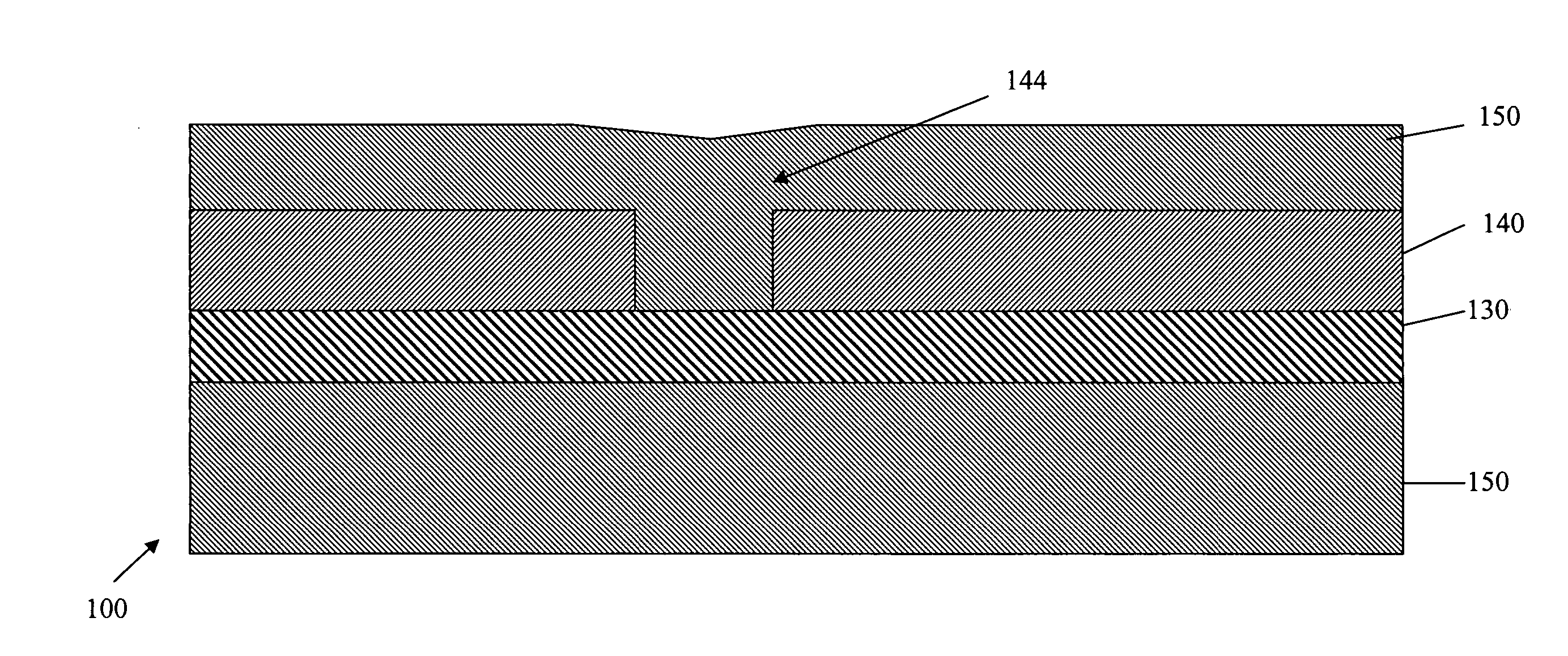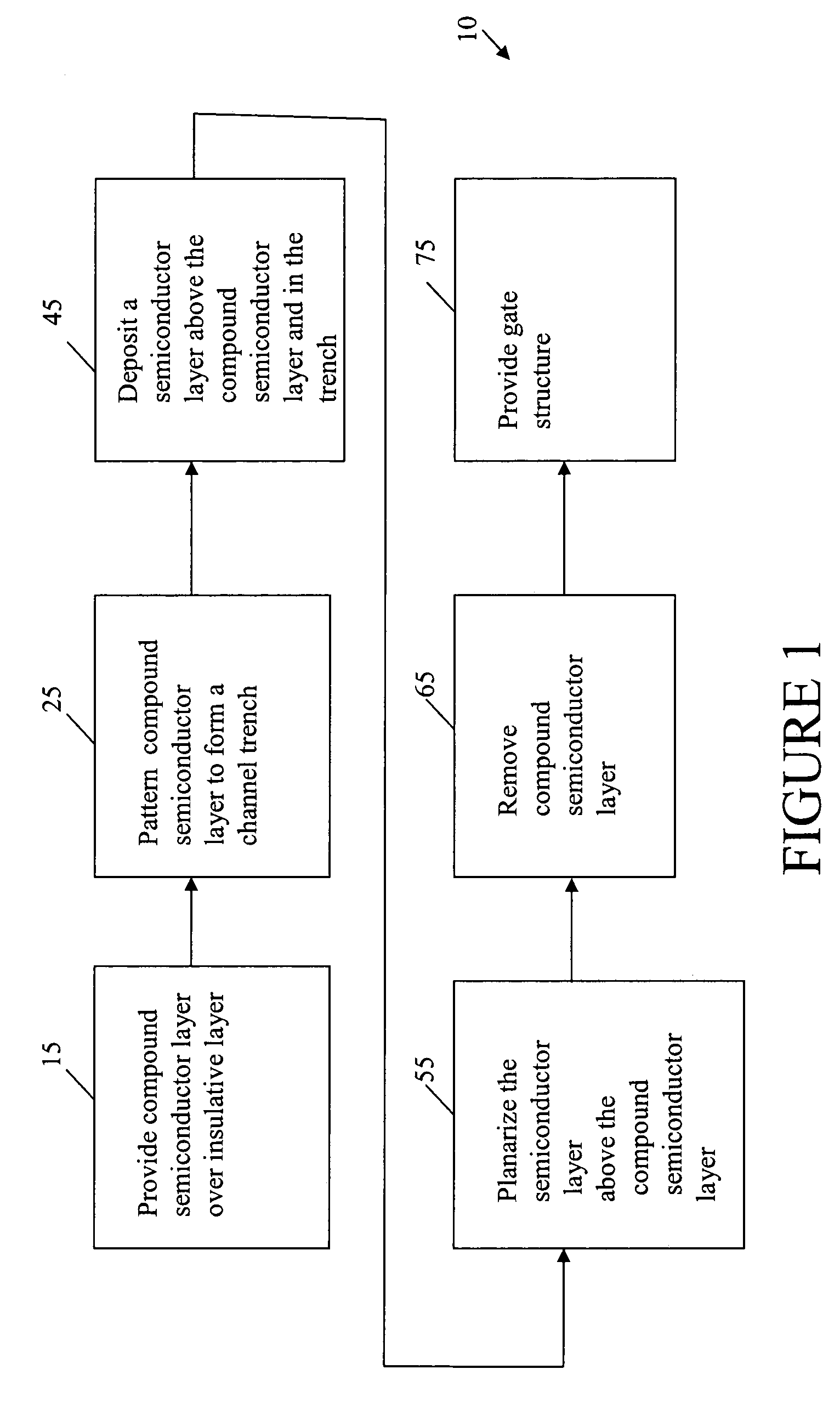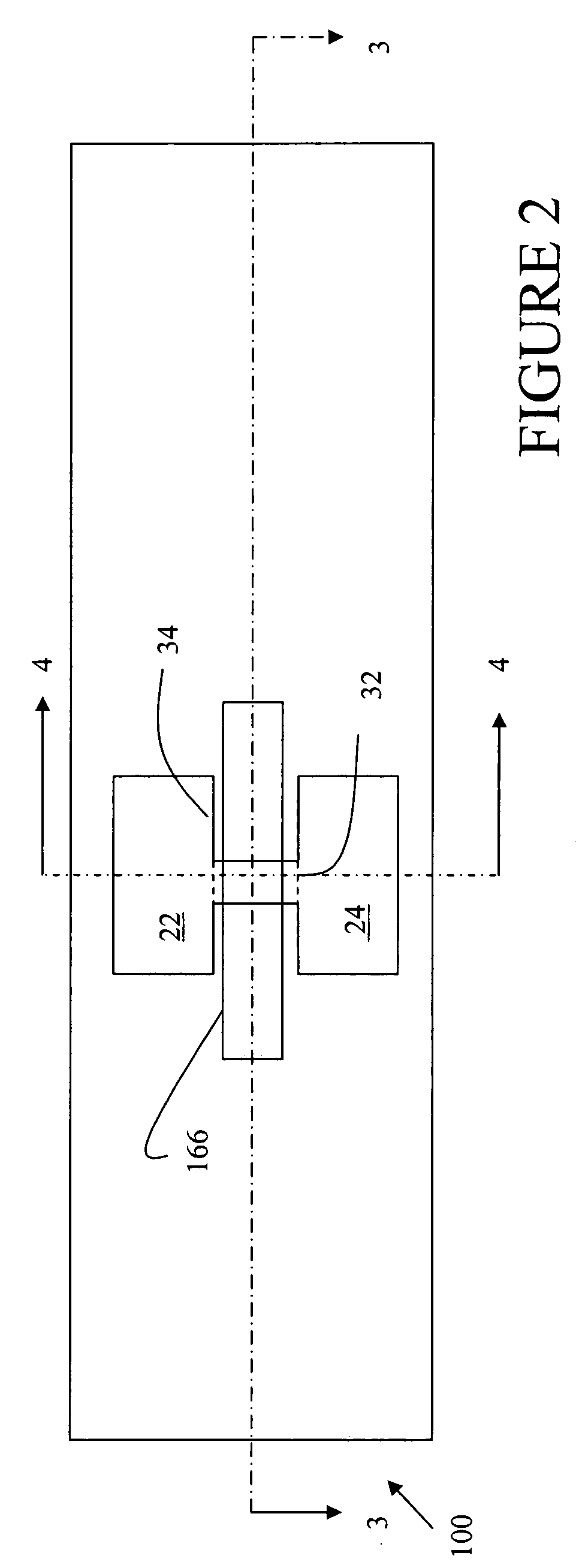Method of fabricating an integrated circuit channel region
a technology of integrated circuits and channel regions, applied in the field of integrated circuits, can solve the problems of difficult manufacturing of double gate structures using conventional ic fabrication tools and techniques, complicated and expensive equipment, and inability to mass produce ics
- Summary
- Abstract
- Description
- Claims
- Application Information
AI Technical Summary
Benefits of technology
Problems solved by technology
Method used
Image
Examples
Embodiment Construction
[0032]FIG. 1 is a flow diagram depicting exemplary operations in a method or process 10 of patterning a fin-based transistor or fin field effect transistor (FinFET). The flow diagram illustrates by way of example some operations that may be performed. Additional operations, fewer operations, or combinations of operations may be utilized in various different embodiments. Flow diagram 110 (FIG. 12) illustrates on alternative embodiment in which a masking step is used to protect source and drain locations during etching. Flow diagram (FIG. 15) illustrates another alternative embodiment in which a spacer is utilized to increase the aspect ratio of the fin structure.
[0033]In FIG. 1, a wafer including a compound semiconductor layer over an insulative layer is provided in a step 15. The wafer can be purchased or manufactured using SIMOX (oxygen implementation into silicon and annealing or wafer bonding). In a step 25, the compound semiconductor layer is patterned to form a channel trench. ...
PUM
 Login to View More
Login to View More Abstract
Description
Claims
Application Information
 Login to View More
Login to View More - R&D
- Intellectual Property
- Life Sciences
- Materials
- Tech Scout
- Unparalleled Data Quality
- Higher Quality Content
- 60% Fewer Hallucinations
Browse by: Latest US Patents, China's latest patents, Technical Efficacy Thesaurus, Application Domain, Technology Topic, Popular Technical Reports.
© 2025 PatSnap. All rights reserved.Legal|Privacy policy|Modern Slavery Act Transparency Statement|Sitemap|About US| Contact US: help@patsnap.com



